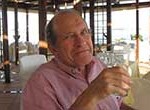 Last November, The Spectator held a debate on the proposition that drug addiction is not a disease. Former BMJ columnist Theodore Dalrymple was one of the proposers (I was invited to join him but couldn’t be there), and the motion was carried by a substantial majority. Apart from telling us what many ordinary people think about addicts and addiction, the debate also has important implications for Alcoholics Anonymous (AA) and its sister organisation Narcotics Anonymous.
Last November, The Spectator held a debate on the proposition that drug addiction is not a disease. Former BMJ columnist Theodore Dalrymple was one of the proposers (I was invited to join him but couldn’t be there), and the motion was carried by a substantial majority. Apart from telling us what many ordinary people think about addicts and addiction, the debate also has important implications for Alcoholics Anonymous (AA) and its sister organisation Narcotics Anonymous.
To question whether addiction is a disease is not to argue that doctors have no place in its management. Unwanted pregnancy isn’t a disease, but doctors have some very effective interventions for it and that’s true of some addictions too. Claiming that addiction must be a disease because it’s in DSM-5 hardly clinches the argument, since many psychiatrists feel that DSM simply encourages the medicalisation of ordinary human misery. The argument I’ve heard from some American doctors (if we don’t call it a disease, we can’t claim on medical insurers) is even dodgier.
For AA, the matter is simple: alcoholism is a disease that robs people of control over their drinking. One drink means one drunk. Controlled drinking is an impossible goal and a dangerous delusion. If AA were simply a self-help group, I would have no quarrel with it, but unlike most other self-help groups, which support a range of approaches, AA has traditionally been very dogmatic, with a “one size fits all” philosophy. As well as insisting that AA is specifically effective (Cochrane disagrees [1]) it has traditionally been opposed to other interventions, especially medical ones. German AA groups even have a motto: “nichts über die Zunge” (“nothing over the tongue,” ie: no medication). For a supposed “disease,” that’s a strange position to take.
Meta-analyses confirm that disulfiram, our oldest relapse prevention drug, is still the best, provided that its administration is supervised. [2,3] Naltrexone is also useful, [4] yet although self help groups are often overenthusiastic about new treatments, early US naltrexone researchers had to do a lot of persuading before AA influenced groups would agree to controlled trials.
Slowly, things are changing. The availability of depot and implanted naltrexone has largely solved compliance problems, and even some of the most famous AA “12-step” clinics in America, such as Betty Ford and Hazelden, now prescribe it though for some reason, disulfiram often seems a step too far.
The Spectator verdict was that addicts are not simply helpless victims of a malign disease, but make certain choices and can, in principle, make different and less damaging ones. Regarding it as a disease can lead to an anti-therapeutic self-fulfilling prophecy: “I’m an addict; what do you expect?” I sometimes took my alcoholic patients to the nearest bar and asked them to drink half a pint of beer before we returned to the clinic. Not one of them felt an irresistible compulsion to stay and have another drink. This is a useful lesson and medication, together with appropriate support and encouragement—which doesn’t always need to be labour intensive—can help it to become part of a new, lasting pattern of alcohol free thought and behaviour. [5] I hope AA in Britain is following America’s example.
Conflict of interest statement: “I declare that that I have read and understood the BMJ Group policy on declaration of interests and I hereby declare the following interests: I am the research director of the Stapleford Centre. The Stapleford Centre is a private, out-patient addiction treatment centre that offers a range of evidence-based pharmacological and non-pharmacological treatments. I have no financial links with any pharmaceutical company, though I have occasionally given unpaid advice and received travel expenses.
Colin Brewer has been an academic psychiatrist and director of an NHS alcoholism unit. He never planned to spend the last two decades of his career entirely in private practice but that’s what happened. He still contributes to the scientific literature on addiction treatment and is the research director of the Stapleford Centre. It still puzzles him that despite having long ago left formal academia, he has written the majority of British papers on disulfiram and naltrexone treatment published since 1984. He is also a director of the Secular Medical Forum and active in the right-to-die movement.
References:
1. Ferri M, Amato L, Davoli M. Alcoholics Anonymous and other 12-step programmes for alcohol dependence. Cochrane Database of Systematic Reviews 2006, Issue 3. Art. No.: CD005032.
2. Jørgensen CH, Pedersen B, Tønnesen H. The efficacy of disulfiram for the treatment of alcohol use disorder. Alcohol Clin Exp Res. 2011 Oct;35(10):1749-58
3. Skinner MD, Lahmek P, Pham H, Aubin HJ. Disulfiram efficacy in the treatment of alcohol dependence: a meta-analysis. PLoS One. 2014 Feb 10;9(2):e87366.
4. Swedish Council on Technology Assessment in Health Care (SBU). Treatment of alcohol and drug abuse: an evidence-based review. Int J Technol Assess Health Care. 2002 Winter;18(1):145-54
5. Krampe H, Stawicki S, Wagner T, Bartels C, Aust C, Rüther E, Poser W, Ehrenreich H. Follow-up of 180 alcoholic patients for up to 7 years after outpatient treatment: impact of alcohol deterrents on outcome.
Alcohol Clin Exp Res. 2006 Jan;30(1):86-95.